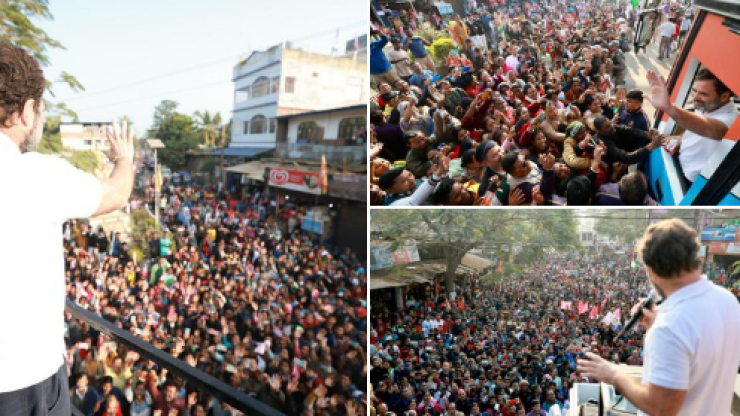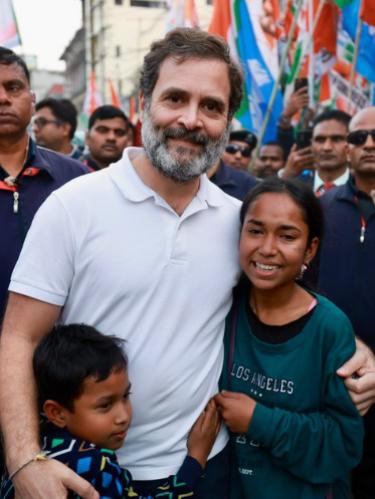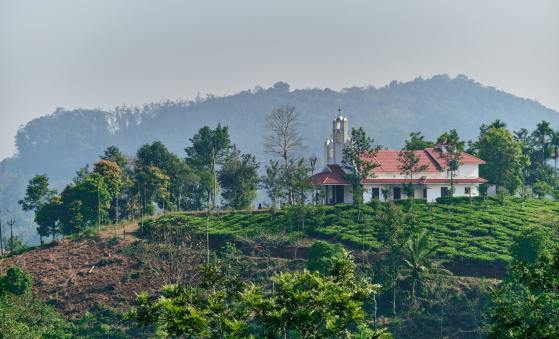
In the heart of Manipur, amidst the echoes of the ethnic-religious violence that have haunted the state for eight months, Congress leader Rahul Gandhi kick-started the Bharat Jodo Nyay Yatra on January 14. This yatra, symbolising not just a political journey but an ideological rally, embarks on a mission to illuminate the turmoil within Manipur, where ethnic violence has claimed over 170 lives since May 2023, more than half of them being Christians.
Addressing the crowd at the Khongjom War Memorial in Thoubal district, Gandhi left no room for ambiguity, denouncing Manipur as a glaring manifestation of the "BJP-RSS ideology of hate." He promised to restore the “harmony and affection” that the state has lost amidst the clashes between Meitei and Kuki-Zo groups.
According to the Congress, this yatra is not just about politics; but is an attempt to uphold constitutional values and address the prevailing inequalities. The yatra's journey is no fleeting tour. It traverses the length of Manipur, Nagaland and Assam, and will cover 6,700 kilometres across 110 districts of India, finally culminating in Mumbai, Maharashtra on March 20.
The commencement at the Khongjom War Memorial, a monument commemorating the Manipur Siege of 1891, highlighted the historical significance associated with the yatra. The war memorial, where courageous individuals faced British forces, now serves as a backdrop to a different battle – one against ideological currents that pose challenges to the social fabric of Manipur.
In the Meitei-majority Imphal Valley, Gandhi engaged with Meitei civil society groups, lending an empathetic ear to their grievances. However, as the yatra ventured into the Kuki-Zo-dominated Kangpokpi district, the ethnic fault lines became evident.

While the locals welcomed the convoy enthusiastically, there were whispers of unease. Some youths demanded to know if any Meiteis were part of the entourage, underscoring the palpable divide that has led each community to avoid the other's territory. The yatra, while aiming to unite, involuntarily exposed the gaps that have developed over time.
Kuki groups seized the opportunity to submit demands, which ranged from a plea for a separate Kukiland state to a central university. Gandhi, pledging to amplify Manipur's issues in Parliament, expressed his commitment to listening to the people's “mann ki baat,” (inner voice) contrasting it with the monologues delivered by PM Modi under the same name.
As the yatra moved into Nagaland, the landscape changed, but the theme remained the same – the struggle for development, peace and unity. Locals appreciated Gandhi's articulation of their pressing concerns, such as unemployment and poor road connectivity.
Gandhi questioned the BJP's ability to bring development to Nagaland despite holding power at both the state and central levels. He reiterated the Congress' dedication to resolving the Naga insurgency, citing the unfulfilled 2015 Framework Agreement with NSCN(IM).
As the yatra entered Assam, the Congress accused the BJP-led state government of impeding their events and deliberately orchestrating low turnouts. Assam Chief Minister Himanta Biswa Sarma stoked controversy by labelling it a “Miya (a term BJP associates with the Muslims) Yatra,” focusing on Muslim-dominated areas. The Congress condemned the remark as an attempt to polarise Assam along communal lines.
Gandhi, on the other hand, declared the Assam government the most corrupt in India. Sarma, in response, cancelled his own events, citing a desire to avoid clashes with the yatra. The political landscape in Assam, already tumultuous, became a battleground of words, ideologies and accusations.
The high-profile yatra aims to bolster the Congress's standing. Yet, the region's polarising politics and ethnic divides pose a formidable challenge to the overarching goal of fostering unity. While Gandhi has been warmly received by locals, bridging the rifts between communities and delivering peace and progress remains the litmus test.




